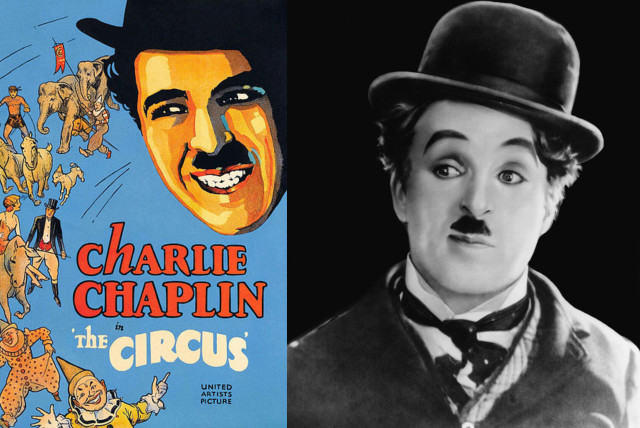Enjoy Charlie Chaplin, comedy films? Israeli research uncovers why

Since humor plays a prominent role in our lives, understanding the cognitive and neural mechanisms of humor is regarded as very important.
A century-old movie starring Charlie Chaplin has helped researchers at Bar-Ilan University (BIU) in Ramat Gan and the Paris Brain Institute to study the neural substrate of humor using a new tool.
Until now, functional magnetic resonance imaging (fMRI) that measures the small changes in blood flow that occur with brain activity has been the preferred technique for this type of research, and several studies have shown the involvement of the temporal lobe in the processing of humorous stimuli.
Since humor plays a prominent role in our lives, understanding the cognitive and neural mechanisms of humor is regarded as very important. It’s hard to imagine our world without humor, which is so ubiquitous in our lives that we frequently fail even to notice it.
But the signal obtained via fMRI doesn’t allow researchers to detect the entire spectrum of electromagnetic waves generated by the brain, and part of the information is lost.
Israeli research fills in information on the science behind humor
To fill this gap, the researchers analyzed intracerebral electrophysiological recordings that make it possible to look at neuronal activity directly with a high spatial and temporal precision (at the millisecond scale) in several cortical areas. Using the French institute’s CENIR neuroimaging platform, they studied 13 epileptic patients with an average age of 27 who had been implanted with deep brain electrodes as part of a pre-surgical assessment of refractory epilepsy.
The team asked the patients to watch a three-minute excerpt from Charlie Chaplin’s Circus (produced in 1928) while their brain activity was measured in real-time. Beforehand, the amusing nature (or not) of each sequence had been evaluated, frame by frame, by a group of healthy volunteers.
The team then compared the patients’ neural activity recorded during the funniest scenes in the film with that recorded during the least funny scenes. “We observed that the funniest sequences were associated with an increase in high-frequency gamma waves and a decrease in low-frequency waves. For the most amusing scenes, it was the other way around, explained Dr. Vadim Axelrod, who led the experiment. He was a fellow in the lab of BIU Prof. Moshe Bar and in the lab of Prof. Geraint Rees at University College London) and earned his doctorate at Tel Aviv University (TAU).
They published their study under the title “Intracranial study in humans: Neural spectral changes during watching comedy movie of Charlie Chaplin” in the journal Neuropsychologia, an international interdisciplinary journal devoted to experimental and theoretical contributions that advance understanding of human cognition and behavior from a neuroscience perspective.
“These results indicate that high-frequency neural activity, which is seen in tasks that require a lot of cognitive engagement, such as work, is also a mark of humor appreciation. Conversely, scenes that are not funny – such as transition sequences where the character moves from one place to another without doing anything – promote inattention and introspection. and a preponderance of low frequencies,” Axelrod explained. “More importantly, this inverse relationship between high and low frequencies was observed in temporal lobe regions but not in others. It seems that humorous content is not processed in the same way throughout the cortex and depends on brain areas and functions.”
The treatment of humor is based on two complementary mechanisms: first, the detection of an incongruous element of reality (for example, in Charlie Chaplin’s The Gold Rush (1925), the hero eats shoelaces like spaghetti). Then, the emergence of a positive emotion related to this incongruity. What is funny would therefore be both unexpected and pleasant and involve two neural circuits, both cognitive and emotional.
“Our results support this theory, as we confirm the prominent role of the temporal lobe in the appreciation of humor. As the anterior parts of this area are involved in semantic memory, we can imagine that their activity is linked to the analysis of the scene and the detection of its incongruous content,” Axelrod continued. “Conversely, the activation of its posterior parts could correspond to understanding the unusual – and therefore amusing – aspect of certain social interactions.”
Future studies will have to show the simultaneous activation of cognitive and emotional neural circuits to formally validate the theory of incongruity, he suggested. “Researchers will also need to look at other areas involved in cognition such as the inferior frontal gyrus and anterior cingulate cortex and emotions. Finally, there can only be a generalization about the mechanisms of humor by studying other forms of it. Here, we only looked at reactions to the slapstick genre. Using longer videos, with more complex social interactions where jokes, irony, sarcasm or references jokes are present, we can expand our understanding of this magnificent, uniquely human phenomenon that is derision.”
Jerusalem Post Store
`; document.getElementById("linkPremium").innerHTML = cont; var divWithLink = document.getElementById("premium-link"); if (divWithLink !== null && divWithLink !== 'undefined') { divWithLink.style.border = "solid 1px #cb0f3e"; divWithLink.style.textAlign = "center"; divWithLink.style.marginBottom = "15px"; divWithLink.style.marginTop = "15px"; divWithLink.style.width = "100%"; divWithLink.style.backgroundColor = "#122952"; divWithLink.style.color = "#ffffff"; divWithLink.style.lineHeight = "1.5"; } } (function (v, i) { });

